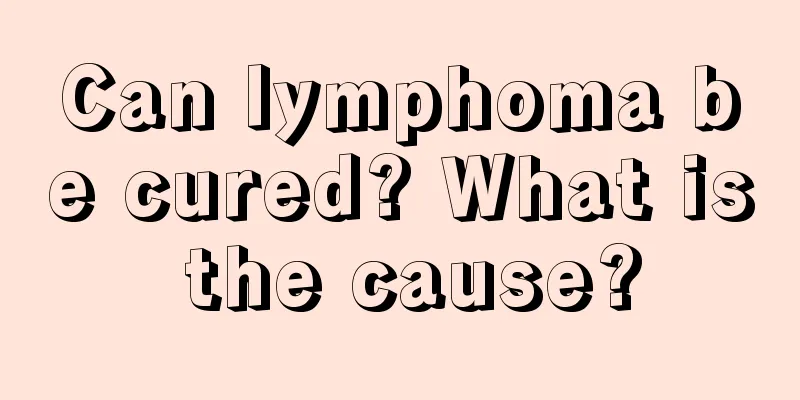Dull pain on both sides of the abdomen

|
Abdominal pain is a relatively common symptom. There are many causes of abdominal pain, mainly because there are many organs in the abdominal cavity. The causes of pain in different parts of the body are also very different. It can be considered as enteritis, and you need to go to the hospital to confirm whether it is enteritis. You can follow the doctor's instructions. Generally speaking, the diet for enteritis needs to be light and spicy foods should be avoided. Clinical manifestations 1. Acute enteritis In my country, the incidence rate is higher in summer and autumn, with no gender difference. The general incubation period is 12 to 36 hours. Nausea, vomiting and diarrhea are the main symptoms of acute enteritis. 2. Chronic enteritis The clinical manifestations are long-term chronic or recurrent abdominal pain, diarrhea, indigestion, etc. In severe cases, there may be mucus or watery stools. The severity of diarrhea varies. In mild cases, patients may have bowel movements 3 to 4 times a day, or diarrhea and constipation may occur alternately; in severe cases, patients may have bowel movements every 1 to 2 hours, and may even suffer from fecal incontinence. Some patients may have nocturnal diarrhea and/or postprandial diarrhea. When the rectum is severely affected, a feeling of tenesmus may occur. The feces are mostly paste-like, mixed with a large amount of mucus, and often contain pus and blood. Some patients have fresh blood in their stools, and the lesions are limited to the rectum, which is called hemorrhagic proctitis. The blood or stool is discharged separately, or attached to the surface of normal or dry stool, which is often mistaken for hemorrhoidal bleeding. Patients with proctitis often have mucus and blood in their stools, and may even suffer from fecal incontinence. If the lesions extend above the rectum, blood is often mixed with the stool or bloody diarrhea occurs. Physical examination may reveal mild tenderness around the umbilicus or lower abdomen, hyperactive bowel sounds, and rectal prolapse. treat 1. Pathogen treatment Viral enteritis generally does not require pathogen treatment and can heal on its own. For bacterial enteritis, it is best to select antibiotics based on the results of bacterial drug sensitivity tests. When suffering from bacillary dysentery, because Shigella dysenteriae is widely resistant to commonly used antibiotics, the generally used drugs are co-trimoxazole (cotrimoxazole), pipemidic acid, gentamicin, amikacin, etc. Campylobacter jejuni enteritis can be treated with erythromycin, gentamicin, chloramphenicol, etc. Yersinia enterocolitica enteritis is generally treated with gentamicin, kanamycin, co-sulfamethoxazole, tetracycline, chloramphenicol, etc. Patients with mild Salmonella enteritis may not need antibiotics, while patients with severe cases can use chloramphenicol or trimethoprim-sulfamethoxazole. Invasive Escherichia coli enteritis can be treated with neomycin, colistin and gentamicin with good results. Amebic dysentery, enteritis caused by Giardia lamblia, and Trichomonas can be treated with metronidazole (Flagyl). Schistosomiasis can be treated with praziquantel. Oral nystatin is effective in treating Candida albicans enteritis. Patients with systemic fungal infection need to be treated with amphotericin B. 2. Symptomatic treatment Replenish fluids and correct electrolyte and acidosis. For those who are mildly dehydrated and do not vomit severely, oral rehydration can be given. The WHO-recommended oral rehydration formula is sodium chloride, sodium bicarbonate, potassium chloride, glucose or sucrose, plus water. For patients with severe dehydration or vomiting, normal saline, isotonic sodium bicarbonate and potassium chloride solutions, and glucose can be given intravenously. Drugs that reduce intestinal motility and secretion. Atropine, belladonna, and propantheline can be used in small amounts to reduce intestinal motility, relieve pain, and stop diarrhea. Chlorpromazine can also be used. It has a sedative effect and can inhibit excessive secretion of intestinal mucosa caused by enterotoxins, thereby reducing the frequency and amount of bowel movements. |
<<: Dull pain in the lower left corner of the abdomen
Recommend
Characteristics of Leo
There are many Leos in our lives. Everyone says t...
What should I do if my skin suddenly becomes allergic?
Many friends don’t know that they have skin aller...
There are many small pimples on my body
It is very common to have acne on the body. There...
The difference between flat bamboo root and flat bamboo orchid
Flat bamboo root and flat bamboo orchid are two p...
Corneal detachment surgery
Corneal detachment is mostly caused by inflammati...
Is cleft lip hereditary? Through what inheritance
Cleft lip is a hereditary disease. Due to its spe...
What are the symptoms before death from advanced liver cancer? Five common symptoms before death from advanced liver cancer
When it comes to the symptoms before death in the...
What is the best diet for advanced lung cancer? The most complete diet recipes for advanced lung cancer
Cancer is a disease that can cause death, and the...
How to reduce fever caused by indigestion in adults
Many adults ignore or do not care about their own...
List of commonly used drugs for treating major cancers
Colorectal cancer is a malignant tumor of the dig...
Family inheritance of esophageal cancer
There is a familial clustering phenomenon in the ...
There are several possibilities for liver masses
If a lump appears in the liver, you must pay atte...
What stage is the primary liver cancer of 7cm?
Primary liver cancer 7cm generally refers to the ...
The harm of fake perfume
We need to use perfume in many cases and occasion...
I always feel like I can't open my eyes
When people find it difficult to open their eyes,...









